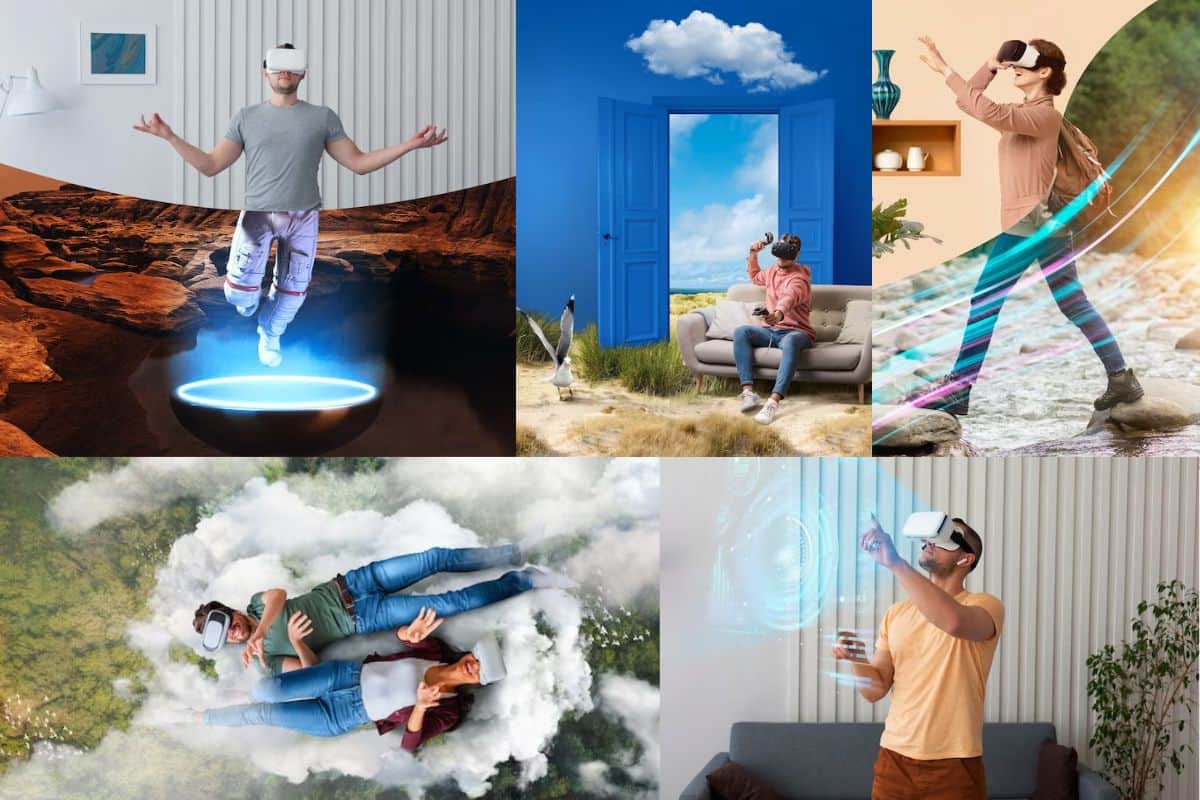Diving into the Virtual World:
In the ever-evolving landscape of technology, Virtual Reality (VR) stands as a gateway to immersive experiences that transport us to realms beyond imagination. This blog delves into the captivating world of VR, examining its applications, impact, and the thrilling possibilities it offers.
1. Understanding Virtual Reality
At its essence, Virtual Reality is a computer-generated simulation of a three-dimensional environment. Through specialized headsets and controllers, users are transported into a digital world, engaging their senses in ways that redefine reality.
2. The Evolution of VR Technology
From early experiments to the current era of consumer VR, technology has propelled VR into various sectors. Improved graphics, advanced tracking systems, and ergonomic designs have made VR more accessible and engaging.
3. Applications of VR Across Industries
a. Gaming and Entertainment
VR gaming immerses players in virtual worlds, providing an unparalleled level of engagement. VR is also revolutionizing the entertainment industry, from virtual concerts to immersive storytelling experiences.
b. Education and Training
VR transforms education by offering immersive learning environments. From medical simulations to historical reenactments, VR enhances training and education across various fields.
c. Healthcare and Therapy
In healthcare, VR finds applications in therapy, pain management, and surgical training. Virtual environments can aid in rehabilitation and provide therapeutic interventions.
4. VR in Real Estate and Architecture
VR has revolutionized the real estate and architecture industries by offering virtual property tours and allowing architects to visualize and modify designs in three-dimensional space, enhancing collaboration and decision-making.
5. Social VR: Connecting in Virtual Spaces
The rise of social VR platforms enables users to interact in shared virtual spaces. From virtual meetups to collaborative workspaces, social VR brings people together in digital environments.
6. Challenges and Future Developments
While VR offers transformative experiences, challenges include hardware costs, motion sickness concerns, and the need for compelling content. Advances in hardware, software, and content creation tools are poised to address these challenges and drive further adoption.
7. The Future of Virtual Reality
As VR technology continues to advance, the integration of haptic feedback, eye-tracking, and artificial intelligence promises more realistic and immersive experiences. The future holds exciting possibilities for VR, ranging from virtual tourism to applications in remote work and healthcare.
8. Conclusion: Navigating the Virtual Frontier
Virtual Reality is not merely a technological trend; it’s a paradigm shift in how we experience and interact with digital content. Navigating the virtual frontier means embracing a world where imagination knows no bounds, where education, entertainment, and social interactions converge in captivating and transformative ways. The journey with VR is a thrilling adventure into a realm where the extraordinary becomes the new reality.
